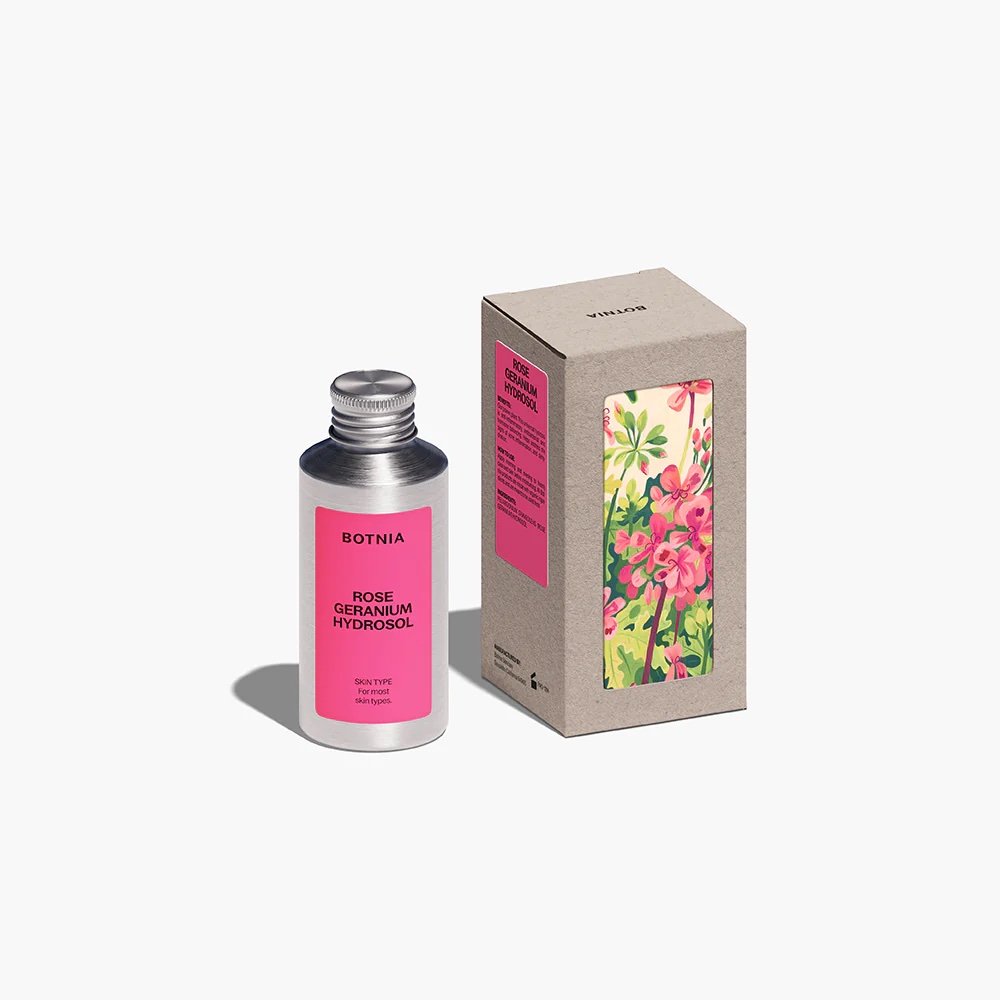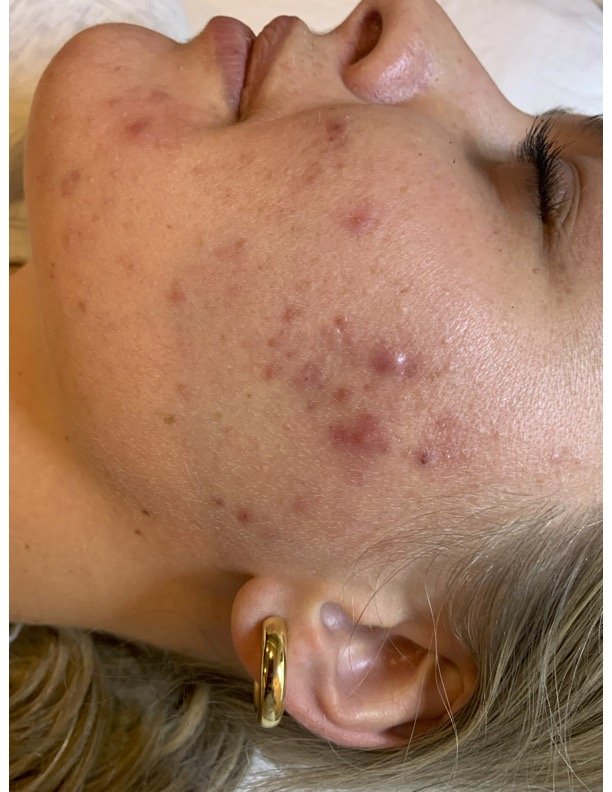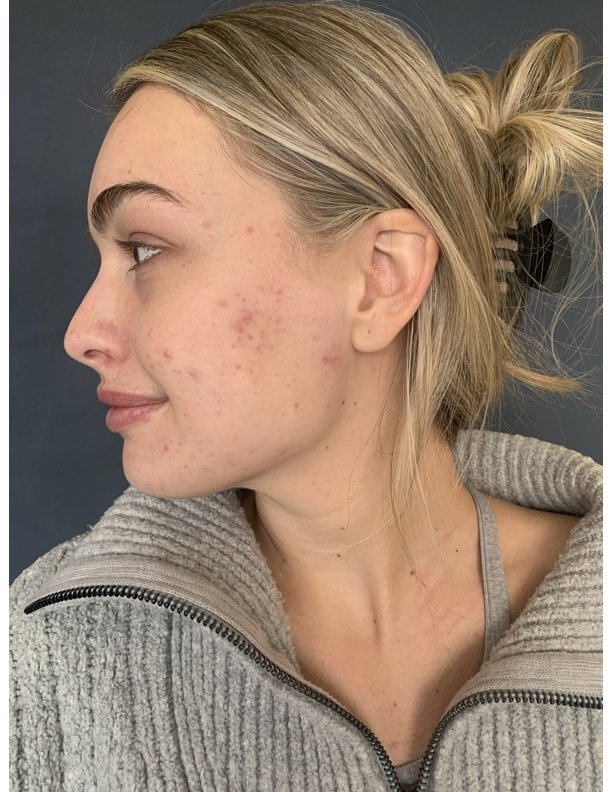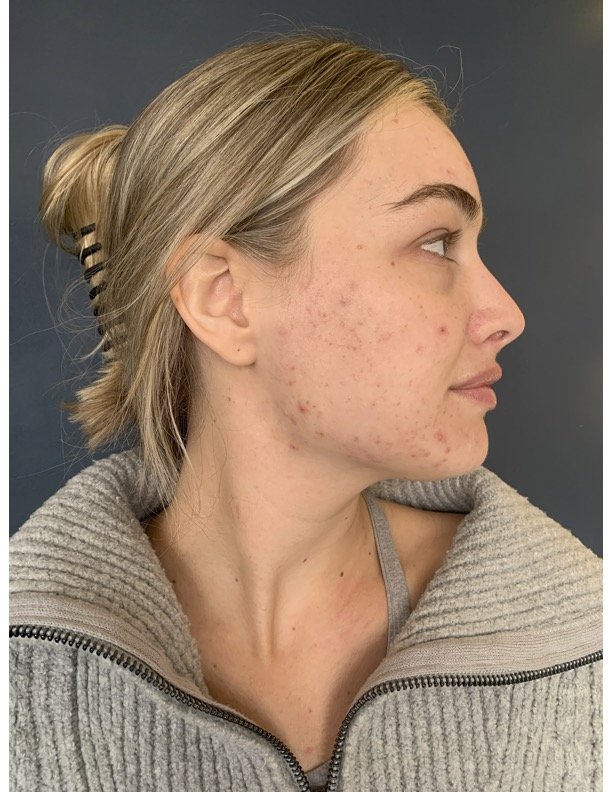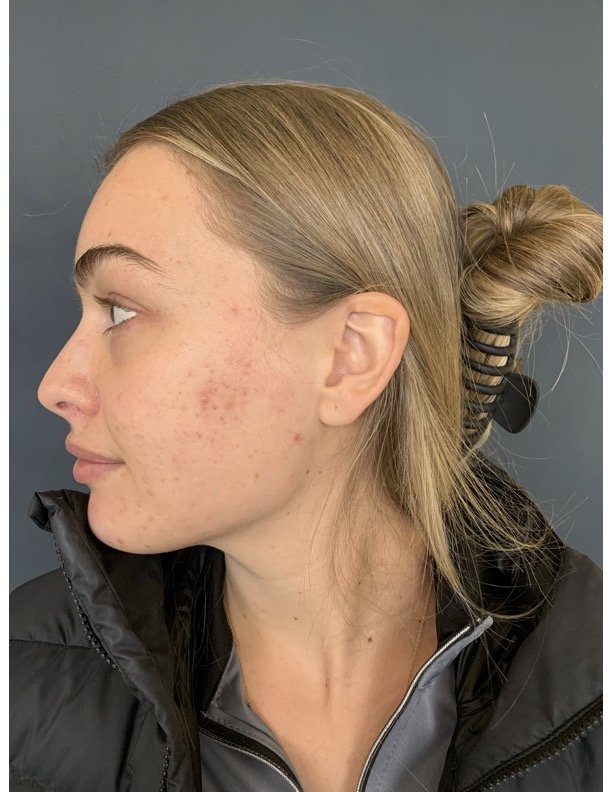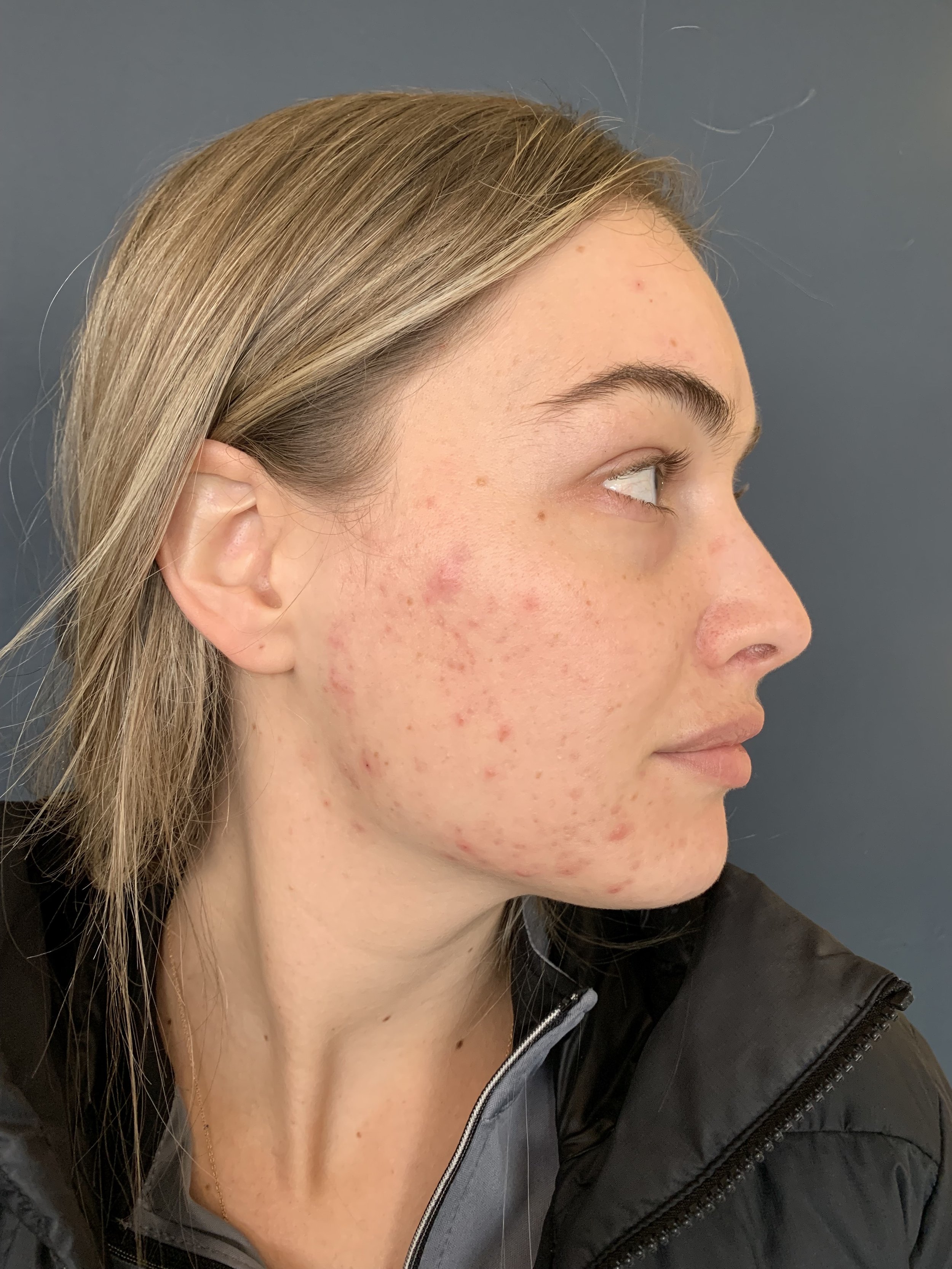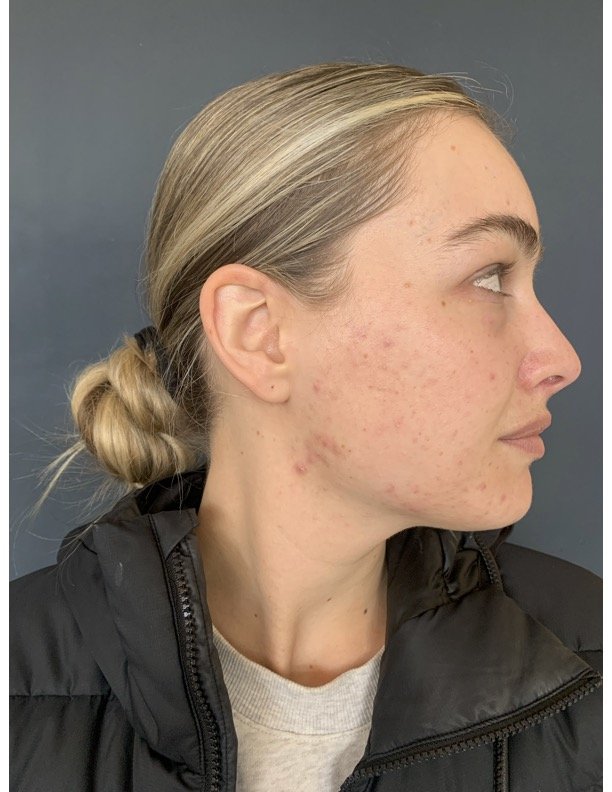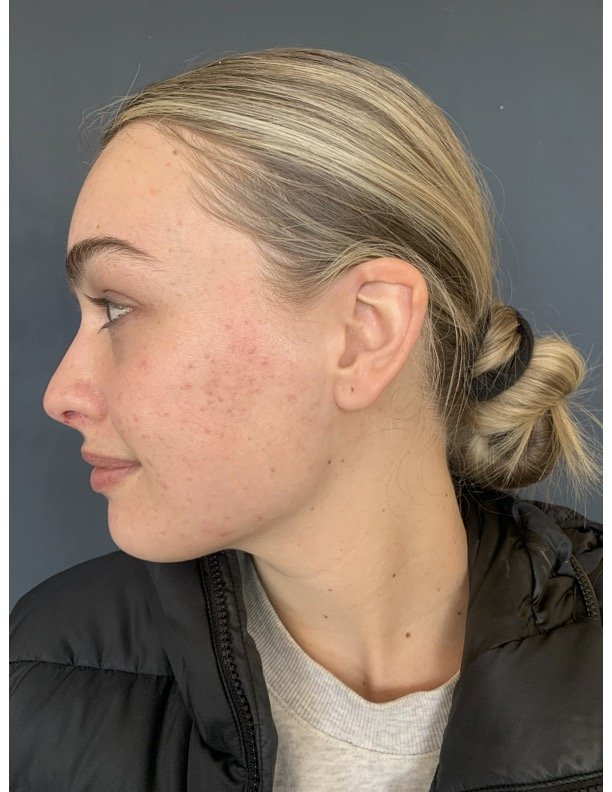Plant-based skincare just works better
This blog post was written by Julianna from Botnia HQ. I loved it and found it very informative so I wanted to share it!
If we haven’t met yet, I’m Julianna—a master esthetician and the community manager here at Botnia. I found my way to Botnia back in 2018, fresh out of esthetics school and brand new to plant-based skincare. Like many estheticians, I had been taught to rely on conventional, synthetic products—the ones promising quick fixes and “overnight” results.
Over the years, I’ve seen plant-based skincare work its magic—not just in the course of a single 90-minute facial, but over weeks, months, and years. I want to share (and debunk) some of the myths surrounding plant-based skincare—ones that might change the way you think about plants and skin.
Whether you’re an esthetician considering a more holistic approach for your guests or you’re rethinking your own home care regimen, this is for you.
Myth #1: Plant-based skincare isn’t as effective as conventional skincare.
Conventional skincare is a lot like fast food: it feels good in the moment but doesn’t do anything for your long term health. Sure, conventional skincare might give you a quick result, but at what cost? There aren’t any shortcuts to long term health, and over time I’ve found this to be especially true for the skin.
Plant-based skincare on the other hand is like eating a whole foods, plant-based diet. It tastes good, feels good, looks good, and gives better results that last longer. What’s so fascinating is how closely our biology aligns with our plant friends.
Here’s a fun fact: plants have an epidermis (aka their version of skin) just like we do. Their epidermal cells protect them from pathogens and environmental stress so they can thrive—just as our skin protects us. Our skin intuitively recognizes and utilizes plant-based ingredients, which is why we’re able to see such profound results without unwanted effects.
Myth #2: Plant-based products don’t contain strong enough active ingredients to create results.
Plant-based skincare is far from lacking active ingredients for major results. Take our Well Serum, for example. Unlike synthetic retinoids that often cause redness, flakiness, and sensitivity (and require lifestyle adjustments to use safely), Well Serum uses algae as a natural source of vitamin A. This plant-derived retinoid improves texture, boosts collagen and elastin production, calms breakouts, and keeps skin hydrated and plump—all without irritation and inflammation.
Unlike synthetic actives, which are often concentrated and can lead to irritation, inflammation and long-term damage, plant-based actives offer a gentler, more holistic approach to treating the skin. Plants are like nature’s sweet little chemists, producing compounds like antioxidants, vitamins, polyphenols, and fatty acids that work synergistically to support overall skin health.
Plant-based ingredients like calendula contain naturally occurring carotenoids to soothe and repair, while rosehips in certain forms are packed with vitamin C and beta carotene to support collagen production and brighten skin tone. With Botnia’s professional line there’s a variety of plant actives that deliver some incredible results, including enzymes, AHAs, BHAs, and plant acids like hyaluronic and lactic.
Myth #3: Plant-based products take too long to show results.
Here’s an analogy: you plant a seed and tend to it every day until you see a sprout. Then you tend to the sprout until it’s strong enough to support itself. It’s the same in getting results with your skin. It might take a little patience but in the long run you’ll have a healthier skin barrier that’s strong enough to also support itself.
The most important thing is to consider the skin’s natural, biological functions and the speed at which they work. When you work with the skin–supporting it with plants–instead of forcing it to speed up its processes, you’ll see quicker, better results for the long term. The beauty of skin is that everyone’s skin is different, completely unique to their genetic makeup. The beauty of plants is that they’re for everyone and always have been. We’re a part of this incredible ecosystem, a synergistic relationship with nature. We are nature.
Ready to bring plants to your practice?
If you’re considering plants for your practice, there might be a whole host of reasons. Maybe you’re at your wit’s end with finding something that works. Maybe your guests are looking for a holistic approach that also speaks to your values. Or perhaps you haven’t been getting the results you want in the treatment room and beyond.
If you’re an esthetician looking to add plants to your practice, stay tuned for our next blog: The Esthetician’s Guide to Plant-Based Skincare: What to Know Before You Switch.
If you’re ready to bring plants to your home care regimen, check out our guide to making the personal switch here.
Voyage LA interview
Today we’d like to introduce you to Anna Edsall.
Hi Anna, thanks for joining us today. We’d love for you to start by introducing yourself.
I have been an esthetician for 15 years. I shifted away from traditional esthetics practices and towards holistic practices about seven years ago. I started studying herbalism and that really opened up my world. I met people and practitioners who were doing things differently, and it just clicked like nothing else had. I studied native plants and started to get curious about how they could heal the skin. That curiosity lead to a product line and a holistic skincare practice. I love what I do and feel grateful to get to work with plants and people everyday!
Alright, so let’s dig a little deeper into the story – has it been an easy path overall and if not, what were the challenges you’ve had to overcome?
I wouldn’t say smooth, no. Covid was a challenge for everyone and definitely inspired a lot of pivots in my life and business. I had to get very clear with what my intention was with this business. Of course, it’s natural, especially in times that feel uncertain and shaky, to go straight towards the financial piece. I want to make x amount of dollars and so on. I am a big believer in setting financial goals and being open with talking about money, but that isn’t my why. I want to help people. I want to encourage people to reconnect to themselves through their daily choices. What we choose to engage with is everything, our food, media, people, products, it all matters. Our skin absorbs everything we put on it, so using the purest ingredients is one way we can support our bodies innate ability to be in balance.
Thanks for sharing that. So, maybe next you can tell us a bit more about your work?
I just opened a storefront in Boise, Idaho and I am very proud of that! We are a holistic skincare practice and boutique for Oil Studio and other clean beauty lines… I remember back when I was starting out in this industry, I was so green and eager to learn. When I would envision my future, I always knew I wanted to have a shop I just never knew how it would come about. Fast forward 15 years and a move to the mountains, and here we are! What sets me apart from others is I am me! There is great freedom in accepting that you will not be everyone’s cup of tea and that’s okay.
What quality or characteristic do you feel is most important to your success?
Curiosity. In my personal and professional life. I want to ask questions, listen and learn. When we are speaking, we aren’t learning anything. There is grace sitting back and observing the situation, not filling the space with words.
Oil Studio newsletter: Bringing nature inside.
This is a sneak peak of our latest monthly newsletter. If you like what you see click here to get added to the list!
If you have been to the shop you know we have a lot of well cared for plants. Plants inside add depth, warmth and remind us of nature which makes us happy :)
Bringing plants into our homes is not a new idea. The Egyptians were the first people to bring plants inside to decorate. Images of potted plants have been found in ancient tombs that date back thousands of years. In the fifteenth century houseplants spread across Europe and exotic plants become desirable. It wasn’t until the 1950’s that indoor plants become common in many homes. Houseplants were very popular in the 1970’s - if you look at photos or magazines from this time chances are you will see lots of greenery inside. With this popularity came plant accessories such a macrame hangers, plant stands, and terrariums. Nowadays with many people spending more time inside working from home, more than ever we are moving nature inside to soften spaces and utilize the benefits of plants.
Some benefits of having house plants:
~ The presence of plants has been associated with lower blood pressure and heart rate, contributing to overall cardiovascular health.
~ Plants release moisture into the air through a process called transpiration, which can increase humidity levels and help prevent respiratory issues, dry skin, and other symptoms related to dry indoor air.
~ Plants act as air filters, reducing household toxins, as well as reducing stress and increasing creativity and productivity. Improved air quality and oxygen levels makes for better sleep which makes everything better!
~ Caring for plants can be meditative. Tending to and observing plants as they change with the light and the seasons is a great practice in mindfulness and helps to calm the nervous system. A calm nervous system = more productivity, more gratitude, and peace of mind :)
~ Lastly, plants look pretty! They can make a boring corner come alive, add life to a book shelf, or make an office more interesting.
I have bought most of my plants off Facebook market place or have inherited them from friends. It’s amazing what people are getting rid of!
A Succulent Day in Boise has a beautiful selection as well as North End Organic Nursery.
We have chosen to use skincare lines that marry science and botanics to nourish and care for your skin. Read this and this if you want to nerd out more on that.
Leaning into routine
I have been cocooning. This time of year is hard. Throw some heartbreak into the mix and you have a perfect recipe for cozy nights spent at home eating bowls of cereal for dinner and binging crime docs. Between trying to sort through the day to day tasks of running a human centered business and taking care of my basic needs, I have had more days than not where I feel depleted. Working has been a savior and I am so grateful for what I do. When I am sad, being of service has been a beautiful way to redirect that sadness and turn it into a restorative experience for someone else.
I have been leaning heavily into my routines and rituals. In a time that feels confusing, I am craving feeling grounded and in control. My routine is not complicated - it is centered around making time to move slowly and give myself moments to quiet my mind. This concept of simplicity carries over into all facets of daily life including how I care for my skin.
Mornings are my favorite time of day. I wake up early with no alarm. I hate waking up to an alarm. I go to bed early. Sleep is my friend. I put my favorite cozy sweater on and make my way to the kitchen. First I feed my cat so he stops screaming at me, then I drink a big glass of warm lemon water to flush out the stagnation from the night. Drinking this slightly acidic, warm liquid just feels like I am doing something great for my body first thing. I then light some incense, and go sit or lay on the couch to meditate. Really this is just deep breathing and trying to clear my mind. If I don’t have an invasive thought for one minute I consider that a win. I then make a cup of frothy coffee. I put it in my favorite mug. I really am someone that needs beauty in my life. Whether that is a mug or flowers I don’t deny myself those things.
After that I have a small bite to eat - usually toast with almond butter and banana. Then I go work out. My work outs lately have been non negotiable. I am chasing endorphins. They are saving me from the late winter funk. My favorite work out right now is barre class. It’s hard every single time and I love the community. Plus I feel strong and I love feeling strong, like I could kick some ass if I needed to :)
After that it’s home to shower and get ready for work. I have been taking more time to do my skincare routine lately because it feels like a treat. I always incorporate a nice facial massage at least once a day while I am applying oil. I believe whole heartedly in facial massage for so many reasons - it reduces inflammation, promotes the flow of lymph, releases muscle tension, helps calm the nervous system, tones and tightens, helps clear congestion, and promotes circulation. Someday I will post a video of me doing facial massage on myself. You don’t have to follow any rules or do it a certain way, just put pressure on the places that feel tense (usually the jaw) and let your intuition guide you. It can look funny, that means you’re doing it right :)
Here is my current skincare routine:
MORNING
BOTNIA Essential Enzymes
2x a week. This nutrient-rich, multitasking cream can be used as a brightening cleanser or a gently exfoliating mask. Powered by pomegranate, juniper, and calendula to regulate your skin’s lymphatic system and prevent the effects of environmental stress.
BOTNIA Restorative Face Cream
I like to use this deeply hydrating face cream in the winter when my skin is dryer. It has hyaluronic acid and squalane that help to lock in moisture without congesting pores. Plant peptides plump skin texture and leave a dewy finish that will have everyone asking about your routine.
I have also been adding a few drops of Remedy Oil to my moisturizer at night. I have been testing out a new Botnia product too and I am LOVING it. I can’t talk too much about it but it will be available very soon!
Thanks for reading! As always reach out with any questions or just to say hey anna@oilstudioskincare.com :)
frothy coffee
If you have one extra minute in your morning you can do this. It is a simple way to add something special to the start of your day.
Make your coffee. I use a french press. While the coffee is brewing, grab your favorite mug and put hot water in it to warm it up.
In your blender put a tablespoon of coconut oil or coconut butter. Having some fat with your coffee helps to keep your blood sugar stable and prevents the jitters.
Add your coffee to the blender.
Add creamer or milk. If I am using milk I add a little bit of honey. Here is where you can also add mushroom powder, adaptogens, cocoa, or any addition that you want.
Blend for 30 seconds.
Pour this frothy goodness in your mug and enjoy!
before + after. treating acne holistically.
First visit. September 2022.
Healing acne holistically is so damn satisfying.
This client came in with stage 3 acne and had tried everything. We started working on healing her skin slowly and gently focusing on restoring her barrier function. She was on antibiotics and the product line she was using had parabens, fragrance and artificial preservatives causing her skin to be reactive, sensitive, and inflamed. First step was to swap out all of her products with Botnia products. We switched her cleanser to the Botnia gentle cleanser. This cleanser is full of soothing botanicals that help bring the skin barrier into balance, like goldenseal leaf and chamomile. We changed up her exfoliation method to the essential enzyme. This multitasking cream utilizes pomegranate, juniper, and calendula to regulate the skin’s lymphatic system and prevent the effects of environmental stress. We also swapped out her moisturizer for the daily face cream and remedy oil. She got off the antibiotics and focused on her gut health. Incorporating a variety of fruits, veggies, and soluble fiber to help bring back healthy bacteria.
Next step was to get blood work done with her functional medicine doctor. They discovered she was very low in vitamin D and zinc (crucial for healthy skin cells). Once she started supplementing the zinc and D and using gentler products her skin responded positively in a short amount of time. She already ate a clean plant based diet, exercised regularly, and drank plenty of water which is crucial to healing any skin condition. We did facials every 3-4 weeks focusing on restoring the barrier and calming the inflammation. Nothing too aggressive, just gentle exfoliation, colloidal oats, sulfur, calendula, antioxidants, goldenseal, and LED red light therapy. I used the red light on her not the blue - I didn’t want to kill the healthy bacteria on her skin that’s trying to repopulate.
We are still working together to heal scarring. Of course she is human so still has breakouts from time to time but all and all her skin is balanced and clear.
The first photo is her first visit in September 2022, second and third photo are in December 2022, the last photos were in January 2023.
cozy curry lentil soup recipe
I make this nutritious lentil soup often during the colder months. It is packed with fiber which is essential for skin and gut health. I like to look at recipes more as inspiration rather than strict rules. This is just a loose guide, use your intuition and creativity. I use my 7 1/2 quart dutch oven for this - use your favorite large soup pot.
3 tablespoons coconut oil (olive oil works too)
1 teaspoon mustard seeds
1 bay leaf
1 tablespoon yellow curry paste ( maybe more, to taste)
1 teaspoon cumin seeds
generous amount of salt and pepper
1 small yellow onion diced
3 medium size carrots peeled and chopped
2 sticks celery chopped
4 cloves of garlic minced
1 thumb size portion of ginger peeled and minced
1 lemon (half sliced and half for juice)
1 can of diced tomatos
1 can of coconut milk
1 cup of yellow lentils ( they are orange when dry but turn yellow when cooked)
4 cups of broth ( I like to use chicken bone broth but use whatever suits you)
Grab your soup pot and heat oil over medium heat. Add mustard seeds and onion, cook until onions soften and seeds start to pop, about 5 minutes. Add all other seasonings (except bay leaf), curry paste, garlic, ginger, carrots and celery. Stir everything together for another few minutes. Add in tomatos, coconut milk, broth, and lentils. Squeeze lemon juice, add lemon slices and bay leaf. Give it a good stir and bring to a boil. Once it is boiling, turn heat to low and cover. Keep covered for about 45 minutes to an hour. Checking in on it once or twice to give it a taste test and see what it needs. Let it cool down and serve in your favorite soup bowl with sour cream, avocado, and cilantro.
*If you like more smooth soups you could put this in a blender and roughly blend it.
transitioning to winter
Ready or not, here in the Northern hemisphere winter is coming. The buzz of summer is quieting and the shorter days are inviting us to slow down and go inward. Fall is an ideal time to start to prep the body and the skin for the cold and dry months ahead.
In the winter our skin has different needs. It may be more dehydrated from summer and time spent outside in the sun. Our has been working harder during the warm months to protect itself from the elements. I think of winter as a time for the skin to rest and restore. The best way to allow the skin to recover is sleep. While we are sleeping our skin is in restore and repair mode. Blood flow to the skin increases while we sleep, flooding the skin with essential nutrients and oxygen. While our skin is constantly regenerating cells throughout the day the most important time for repair is when we are sleeping. Winter is a great time to get some extra rest. So put on your coziest pj’s and your heavy comforter and give yourself and your skin the gift of some extra sleep.
The winter is the driest time of year with less humidity in the air. The lack of moisture in the air can lead to skin feeling dry, flakey, and inflamed. Increasing topical lipids during this time can help lock moisture into the skin. Think oils and balms, anything that has oil as the base. Our Remedy Oil and the Para Botanica Haima or Chaya balms are full of healing, anti inflammatory botanicals and oils that help to soothe and take down any redness brought on by a dry environment. When layering products you always want to start with water based products and finish with the oil based products. For example, put your hyaluronic acid or vitamin c serum on first followed by a moisturizer mixed with oil or oil on its own to finish. In the colder months we are looking for more emollient moisturizers to help protect our skin from drying out.
Being inside more often means we aren’t moving our bodies as much. This can create stagnation in the blood and lymphatic system. While going hiking may not be something we want to do when it’s 30 degrees out, it is crucial to keep moving and sweating during the colder months. Getting bundled up and going on a walk in nature, taking in the change of seasons and observing the earth going into hibernation is a beautiful way to connect to your natural environment. Finding a sauna or hot yoga class and sweating for 20 minutes to an hour fortifies our immune system and detoxifies our skin. Sweating regularly feels great because it releases endorphins in the brain and promotes blood flow to your muscles and organs. It promotes circulation which aids in easing pain and reducing inflammation. Sweating produces a naturally antimicrobial peptide called dermcidin, which helps to destroy harmful bacteria on the skin, minimizing the risk for infection, acne breakouts, and flare-ups in chronic skin conditions. Sweat is incredible! Be sure you are adequately hydrated before your sweat sesh. I love to add electrolyte powder to my water before or after sweating, this one and this one are my current favorites. If you are in Boise, I like to go to hot yoga classes here and use the sauna here.
You may have noticed in the winter your body craves different foods. In the summer you may be reaching for cooling foods and fluids like watermelon, ice water, cucumber, salads, and smoothies. In the winter it’s all about warm foods like soups, broths, and crock pot creations. By warming our body from the inside out we are creating internal balance that shows up on the outside. Increasing your intake of healthy fats moisturizes your body from the inside out and keeps you saciedad for longer. Also incorporating warm fluids like teas and warm water instead of ice water helps to keep the gut happy, keeping the skin happy too.
Being a holistic esthetician means I believe in root cause healing. That can be the longer, less linear path to healing a chronic skin condition, but ultimately I believe it is the most effective long term solution. I look at winter as down time for our skin. If you have been considering treatments like microneedling this is a great time to start that journey. I brought on microneedling specifically for people with deep scarring. I have seen incredible results for people with built up scar tissue from acne or other often traumatic skin conditions.
For any other skin questions or recommendations you can always come in for a holistic skin consultation. It is a great opportunity to get information about your home care and how to best care for your skin. We are all unique individuals with a different body chemistry and set of circumstances. It is important to get to know yourself and what works for you so you can move through the world with ease and love for yourself.
Seasonal insights from Christy Dawn.
on setting boundaries and your skin.
I love boundaries. I have been practicing setting them for a long time now and if you ask my friends they would agree, I am good at them. I am not a hard ass or a stick in the mud but I am not afraid to say no to something if I do not have the capacity to fully deliver or if by doing do it means not caring for myself.
We have all been there - you say yes to do something for someone even when that little voice inside you is telling you it’s too much and you don’t have the time. But you say yes anyways, because if you don’t you may come off as selfish or an asshole, and what could possibly be worse than that! ;) Then the time comes and you realize you have a million others things to do, time is running out, so you stretch yourself thin to try and accommodate others. Before you know it you’re crying in your car, you have completely abandoned yourself and you feel stressed and depleted. Your nervous system is jacked and you’re not doing any of the tasks well. Not to mention you are not taking care of your basic needs - you have deprioritized your needs and put everyone else’s in front of your own. Oof.
After repeating this drama cycle so many times it starts to show up in our bodies in different ways. It can manifest through hormone imbalances, gut issues, inflammation, problems sleeping, skin issues and many other acute or chronic symptom’s. On the skin it can present as breakouts, redness, dull complexion, rashes, inflammation, the list goes on. Running ourselves ragged for others and not taking care of ourselves is stressful for the body. You can read more about stress and the skin here.
Setting boundaries is hard. It can be scary to change the narrative and start saying no. However, on the other side of that fear is freedom. Freedom to fill your time with people and activities you actually want to invest in. Time to rest, cook, go on walks, and hang with friends and family. Time to do whatever the f*** you want! You are allowed to say no to things that you simply don’t want to do without over explaining yourself. Wanting to stay home to watch Netflix and do a face mask is a totally worth while way to spend your time. Putzing around your house fluffing pillows is also a beautiful use of time! When you fill your own cup you are more able to fully show up in your life. Relationships with others will become richer. More importantly, your relationship with yourself will become one rooted in trust and love for self.
Check out Melissa Urban’s Book of Boundaries for scripts to help you set boundaries in all kinds of situations.
stress + the skin
Stress, has been on my mind lately. To be a human on this planet right now feels stressful. I would go as far as to say, if we’re not a little stressed we aren’t paying attention. Mostly this season in life feels really fruitful and amazing, but just beneath the surface of gratitude and awe sits worry, anxiety, and stress. So I decided to go down some rabbit holes, talk to some professionals, and observe my brain, body, and behavior to learn more about what is physiologically happening when we feel stressed and how it shows up in our body and on our skin.
When something stressful happens our sympathetic nervous system releases stress hormones into our body. Cortisol and adrenaline are the most well known of these hormones. When we shift into this state our brain doesn’t know the difference between running from a bear or road rage - our heart rate increases, our body temperature rises, muscles get tense, we can get headaches, and so on, the symptoms vary from person to person. This response is meant to be useful, to keep us alive when there is a threat. However, in our current world we are over stimulated, under connected, and have constant information (some that might feel like a threat) coming at us. Our nervous systems are more stimulated than ever before.
Some ways stress shows up on the skin:
Rosacea
Breakouts
Dull complexion
Extreme dryness or extreme oiliness
Rashes or hives
Eczema flare ups
Chronic stress puts our body into a dysregulated state. This can slow down the skin’s ability to heal, disrupt the microbiome, contribute to inflammation, and accelerate the loss of collagen and elastin.
It’s important to note that stress looks different for different people. Work can be a source of stress for many - for others the feeling of loneliness or grief may cause distress. Not feeling comfortable in our bodies or skin may also contribute to stress. Whatever it is that is causing your body and mind dis-ease it is worth paying attention to and adopt some tools to cope.
5 tools to cope with stress:
Breathe - this may sounds obvious, but if you pay attention you might notice when you get stressed your breath gets shallow. I like to do this quick reset when I am in my car, having to switch gears from one thing to another.
Sit with your hands over your heart, shut down your eyes, unclench your jaw, take 5 deep belly breaths in through your nose and out through your mouth. I visualize pushing out old, stagnant, energy and breathing in fresh, creative, light. It resets the body and brain and instantly calms down the nervous system.
Snack - when our blood sugar is low it is stressful on our system. Keeping snacks on hand is an easy way to keep your blood sugar balanced. I like to keep a bag of nuts in my car and always have a snack drawer at work. Nuts, dried fruit, nut butter, and seedy crackers are good go-to’s to keep the hanger at bay until you can eat a meal.
Movement - go on a walk, do some yoga, dance, run up a hill, ride your bike instead of drive. Any movement is better than none at all. It doesn’t have to be intense or for a long time, just a walk around the block can release endorphins and help ease stress.
Shut down the screens - Blue light from screens can disrupt our circadian rhythm which can effect sleep. Try setting limits on different apps especially social media. You can do this in your settings. Shutting down all screens when the sun goes down is a good habit to adopt. This signals to our body that it is time to slow down and rest. Also, wearing blue light blocking glasses is a must for protecting your eyes and brain from EMF’s. I like the brand Bon Charge.
Pleasure - Whatever this means to you! It could be connecting with a trusted friend or partner, traveling, gardening, being with animals, or getting a facial or massage. Whatever lights you up. Pleasure in the form of sex with yourself or with a partner is also a great way to relieve stress. Bonus it releases chemicals that make your skin glow :)
exfoliation from a holistic perspective - why less is more
In the world of mainstream beauty practices, exfoliating has become known as the magic step to cure all of our skin woes. Breaking out? Exfoliate. Skin feeling dry? Exfoliate. Hyperpigmentation? Exfoliate. Feeling sad? Exfoliate!
In the midst of all of this talk on exfoliation solving all of our skincare problems, we seem to have forgotten the skin's natural cycle of cellular turnover and its innate ability to heal and hydrate itself.
There are two kinds of ways to exfoliate, the first being mechanical exfoliation. These are your scrubs and anything with any grit to it. The second is known as chemical exfoliation–the main forms of chemical exfoliation are Alpha Hydroxy Acids (AHA’s) and Beta Hydroxy Acids (BHA’’s). AHA’s are water soluble and BHA’s are oil soluble, meaning BHA’s have the ability to penetrate deeper into the skin than AHA’s. Both of these forms of exfoliation give us the look of glowing, dewy skin instantly, but this is often short term and it actually can cause harm if done too often and too aggressively.
Let’s briefly break down the basics of how the skin works and why stripping it of natural oils and dead skin cells can be harmful in the long run. For about the last decade scientists have been studying the importance and intricacies of the skin’s microbiome. Your microbiome—the symbiotic collection of 1 trillion bacteria, fungi, viruses, and other microorganisms living on and in your skin, is an intricate system working to self-protect, self-hydrate, self-exfoliate, self-heal, and even self-cleanse.
The skin’s ability to self exfoliate is called desquamation. Desquamation is the skin’s natural shedding process. It takes the average skin cell 28 days to cycle from creation to desquamation. That process is activated by bodily enzymes that loosen the bonds between corneocytes and the barrier.
The more products we use and the more we exfoliate, the more we can damage our skin barrier and microbiome, depleting the essential nutrients it needs to function properly. This can lead to a host of skin inflammation ailments including acne, rosacea, psoriasis, redness, irritation, eczema, and more. Hydrated skin is happy skin, and oftentimes we can achieve that by leaving our skin alone. Most of our hydration lives within the skin, beneath the top layer (the epidermis), in the deeper tissues known as the dermis. Hyaluronic acid molecules are naturally occuring in our skin, HA loves water and will hold onto it, binding it to your cells. When the water in our skin meets the naturally occurring oils in our skin, voila, a moisturizer is created. The dead skin cells (corneocytes) are what help deliver that moisturizer into our skin. So our dead skin cells are very important! Constantly sloughing them off throws off this whole process potentially resulting in a compromised barrier and an unhappy microbiome.
The good news is, there are gentle, effective ways to exfoliate without compromising the skin barrier. I recommend a gentle exfoliation 1-2 times per week with a fruit enzyme or acid. These are more mild than most scrubs and work by digesting dead skin cells as opposed to sloughing them off. It is also important to look at your internal hydration when combatting dry, dehydrated skin. Drinking plenty of water or herbal tea and eating an abundance of healthy fats can hydrate our cells from the inside out.
Some products to consider for gentle exfoliation:





